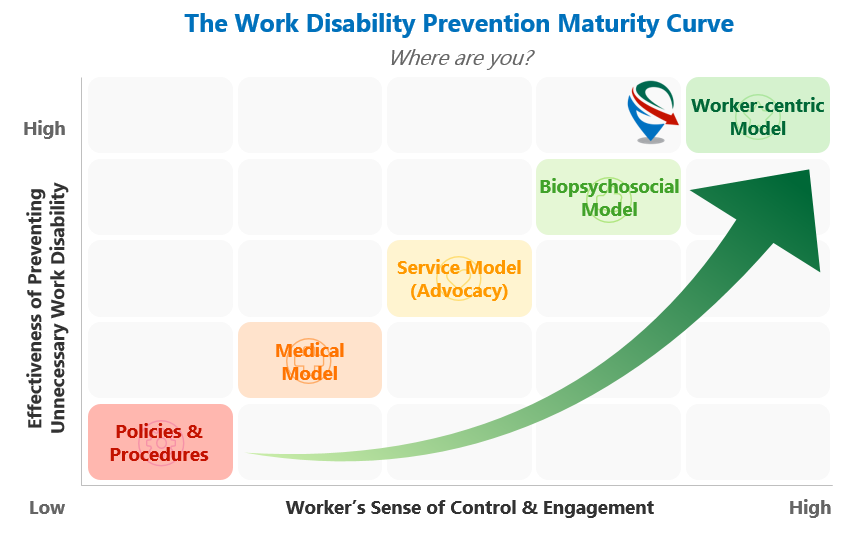INTEGRATED WORK DISABILITY PREVENTION
At Centrix we take a different approach. Job modifications, return to work program, claims advocacy models, and evidence based medical models are presented as the next “thing”, the panacea. These are just tools.
Our approach:
Principles of Work Disability Prevention and the Return to Work Process
- Principle #1 Diagnosis does not equal work disability
- Principle #2 Work motivation powers the RTW process
- Principle #3 Work transition is the key practice
- Principle #4 The Return to Work Plan defines the process
An Integrated Work Disability Prevention model that is worker-centric presents the instruction manual on how to use and synthesize the tools the right way.
Every workplace is unique. Work Disability Solutions should be too.


Worker-Centric
A Worker-Centric approach is the next evolution in preventing unnecessary Work Disability. The worker has the most power to determine their eventual outcome after experiencing an injury or illness.
What is the difference between returning to work on Monday instead of Tuesday? Was it medically required to be work disabled one day but not the next?
A Worker-Centric approach Drives Outcomes.
Measurement
Every workplace is unique. Work Disability Solutions should be too.
How do you know if you are effectively engaging workers? Our approach is to stop guessing and measure what matters.
Qualitative assessment and Quantitative measurement provide insights into what matters most to YOUR workers when they become injured or ill and ultimately what engages them in their RTW.
Worker Engagement is the key differentiator.
Measuring your program should be more than just finding out if the worker felt they had good service. An important part of a Worker-Centric, Work Disability Prevention Program is measuring whether you are effectively engaging and activating your workers. This is the key to reducing unnecessary duration.
Measuring Drives Improvement


Analysis and Insights
There is no point in measuring if you don’t have valuable insights that are actionable.
We take your measurement results, analyze them, develop insights, and then make recommendations that are evidence-based. We are unmatched in our ability to link engagement and duration.
The only thing that matters is “Did we do a good job returning the worker back to work in a timely manner.”
Engagement + Timely RTW = Optimal Outcome
Without knowing if you engaged your workers to actively participate then you are relying on a system-centric approach and that is a recipe that hasn’t worked.

